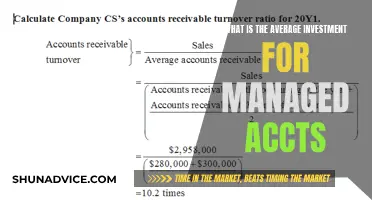
A 457 plan is a tax-advantaged retirement savings account for US state and local government employees, as well as some non-profit employees. It is similar to a 401(k) plan, but there are some key differences. For example, 457 plans are not matched by employers, and they have fewer investment options. However, a 457 plan can be a great way to reduce your tax bill and save for retirement, especially if you are looking to retire early.
| Characteristics | Values |
|---|---|
| Type of plan | Tax-advantaged retirement savings plan |
| Who is it for? | State, local government and some non-profit organisation employees |
| How does it work? | Employees can contribute a portion of their salary pre-tax to a special retirement account |
| Tax treatment | Taxes are deferred until withdrawal; tax-deducted from salary before employer withholds income tax |
| Contribution limit | $23,000 for under 50s in 2024; $23,500 in 2025 |
| Catch-up contributions | $7,500 for over 50s |
| Double limit provision | Contributions up to twice the annual limit for three years before normal retirement age |
| Early withdrawals | No penalty for early withdrawals; taxed as income |
| Hardship withdrawals | Allowed for emergencies as defined by IRS |
| Loans | Up to 50% of vested account balance or $50,000, whichever is less |
| Vesting | Employer contributions may require a vesting period |
| Investment options | Mutual funds, annuities, stocks, bonds, money market investments |
What You'll Learn
- The 457(b) plan is a tax-advantaged retirement savings plan for government employees and some non-profit employees
- The 457(b) plan allows employees to save pre-tax earnings, reducing their annual income taxes
- The Roth 457(b) plan allows after-tax contributions and tax-free withdrawals in retirement
- The 457(b) plan has a higher contribution limit than other retirement plans
- The 457(b) plan offers the potential for employer-matching contributions

The 457(b) plan is a tax-advantaged retirement savings plan for government employees and some non-profit employees
The 457(b) plan is a tax-advantaged retirement savings plan for certain government employees and some non-profit employees. It is similar to a 401(k) plan in the private sector, allowing employees to save pre-tax earnings in an account, reducing their annual income taxes while postponing the taxes due until the money is withdrawn during retirement.
The 457(b) plan is available to state and local government employees, as well as employees of certain non-profit organisations. This includes civil servants, municipal employees, law enforcement officers, and public safety personnel. Executives at hospitals, charities, and unions, as well as some independent contractors employed by state and local government bodies, may also participate in 457(b) plans.
The 457(b) plan is an IRS-sanctioned, employer-sponsored savings account. Contributions are deducted from the employee's paycheck and may be taxed in one of two ways. With a traditional 457(b) plan, contributions are taken out of the employee's paycheck before taxes, lowering the overall tax bill today. When the money is withdrawn in retirement, income taxes are then paid on those withdrawals. With a Roth 457(b) plan, the account is funded with money that has already been taxed, and withdrawals in retirement are then tax-free.
There are several benefits to enrolling in a 457(b) plan. Firstly, it allows for tax-deferred growth of savings. Secondly, employees can withdraw funds before the age of 59 1/2 without penalty, which is not usually the case with other retirement savings plans. Thirdly, contributions are deducted directly from the employee's salary before the employer withholds income tax. Finally, employees can contribute up to the annual limit and invest these funds, helping to grow their retirement savings.
There are some drawbacks to the 457(b) plan. Firstly, employer matches are rare, as many government employees already have a pension. Secondly, fees may be higher due to the use of on-site education representatives to encourage employee enrolment. Thirdly, investment options are more limited compared to private sector plans. Finally, withdrawals are restricted while the employee is still working for the employer.
Salesforce's Indy Investment: A Strategic Move for Growth
You may want to see also

The 457(b) plan allows employees to save pre-tax earnings, reducing their annual income taxes
The 457(b) plan is a tax-advantaged retirement plan for employees of state and local governments, as well as some non-profit organisations. It allows employees to save pre-tax earnings, reducing their annual income taxes.
The 457(b) plan is similar to the 401(k) plan in the private sector, in that it allows employees to save pre-tax earnings in an account, reducing their annual income taxes while postponing the taxes due until the money is withdrawn during retirement. The 457(b) plan also has a Roth version, which allows after-tax contributions.
The 457(b) plan is an IRS-sanctioned, tax-advantaged employee retirement plan, offered only to public service employees and employees at tax-exempt organisations. The interest and earnings in the account are not taxed until the funds are withdrawn.
Employees can contribute up to 100% of their salary up to the IRS annual limit. For 2025, the 457(b) contribution limit is expected to rise to $23,500, up from $23,000 in 2024. There is also a catch-up limit of $7,500 as additional savings for those aged 50 and older.
The 457(b) plan offers tax-deferred growth of savings, but there are some drawbacks. One disadvantage is that employers do not commonly match employee contributions. If they do, the employer contribution counts toward the maximum contribution limit.
Portfolio Investment vs Brokerage: What's the Difference?
You may want to see also

The Roth 457(b) plan allows after-tax contributions and tax-free withdrawals in retirement
A 457 plan is a tax-advantaged retirement savings plan for employees of state and local governments, as well as some non-profit organisations. The 457(b) is the most common type. Like a 401(k) plan in the private sector, the 457(b) allows employees to save pre-tax earnings in an account, reducing their annual income taxes while postponing the taxes due until the money is withdrawn during retirement.
The Roth 457(b) plan is an option that allows for after-tax contributions and tax-free withdrawals in retirement. With a Roth 457(b), you fund your account with money that has already been taxed. In exchange, you can make withdrawals in retirement without paying any taxes on the money you take out, including any earnings your money makes while in the account. It's important to note that not all organisations permit Roth contributions to a 457(b) account.
The 457(b) plan is a good option for those looking to save for retirement with tax benefits. It is similar to a 401(k) plan but is designed for public and nonprofit workers. The Roth 457(b) plan, in particular, can be advantageous for those who want to avoid paying taxes on withdrawals during retirement. However, it's worth noting that there may be more limited investment choices compared to private sector plans.
The 457(b) plan also has some unique features that can help you save for retirement. In the three years before retirement, 457(b) plans allow you to contribute up to double the annual limit or 100% of your salary, whichever is less. Additionally, if you have access to another employer-sponsored retirement plan, such as a 403(b), you can contribute the employee maximum to both plans. This can help you increase your tax-advantaged retirement savings.
It's important to note that withdrawals from a 457(b) plan can be complicated, and there may be restrictions on accessing your money while you're still employed. However, there is no penalty for early withdrawals if you have separated from the service of the plan's sponsor. Overall, the 457(b) plan, including the Roth option, can be a valuable tool for those looking to save for retirement, especially for public and nonprofit employees.
How Interest Rates Affect Savings and Investments
You may want to see also

The 457(b) plan has a higher contribution limit than other retirement plans
The 457(b) plan's higher contribution limit offers several benefits. Firstly, it allows individuals to save more for their retirement, which can be especially advantageous for those looking to boost their retirement savings in the years immediately preceding retirement. Additionally, the higher limit provides greater flexibility in financial planning, enabling individuals to allocate their funds according to their risk tolerance and financial goals.
Furthermore, the 457(b) plan offers a unique feature that allows participants to contribute up to double the annual limit or 100% of their salary (whichever is less) in the three years before their normal retirement age. This provision is known as the "double limit" or "catch-up" contribution and can significantly enhance an individual's retirement savings. However, it is important to note that this option requires meticulous record-keeping to ensure compliance with IRS limits, and it may not be offered by all employers.
Compared to other retirement plans, such as the 401(k) and 403(b) plans, the 457(b) plan's higher contribution limit stands out. While the 401(k) and 403(b) plans also offer catch-up contributions for those aged 50 and above, they do not provide the same level of flexibility in terms of double contributions before retirement. Additionally, the 403(b) plan allows for higher total contributions when considering employer contributions, as the 457(b) plan's limit includes both employee and employer contributions.
In summary, the 457(b) plan's higher contribution limit, along with its catch-up and double contribution provisions, makes it a powerful tool for individuals seeking to maximize their retirement savings, especially those in the latter stages of their careers. However, it is important for individuals to carefully consider their financial situation and consult with a financial professional before making decisions regarding their retirement plans.
China's Investment Strategies: Decision-Making Factors and Motivations
You may want to see also

The 457(b) plan offers the potential for employer-matching contributions
The 457(b) plan is a tax-advantaged retirement plan for state and local government employees, as well as employees of certain non-profit organisations. It allows employees to save pre-tax earnings in an account, reducing their annual income taxes while postponing the taxes due until the money is withdrawn during retirement.
In the case that an employer does match contributions, employees can take advantage of this by contributing the maximum amount allowed each year. This will enable them to maximise their retirement savings and benefit from the tax advantages offered by the 457(b) plan.
It is important to note that employer contributions to 457(b) plans may be subject to Social Security and Medicare ("FICA") tax. Additionally, employer contributions are subject to a vesting schedule, which means that employees may need to work for a certain number of years before they are fully vested in the employer contributions.
Visualizing Your Investment Portfolio: A Graphical Guide
You may want to see also







